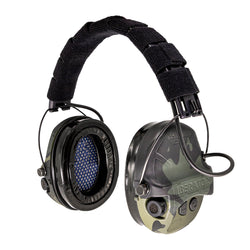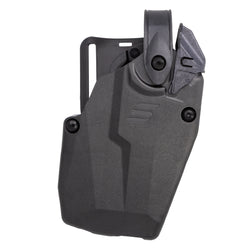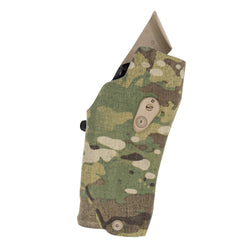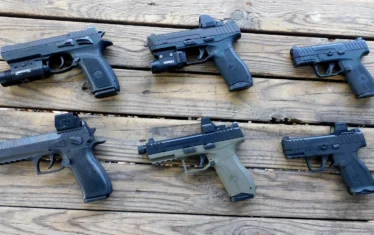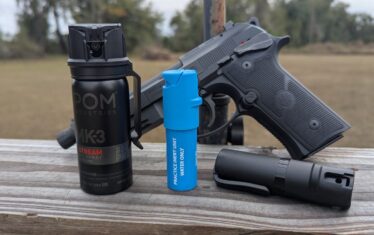In the first installment of the 12 gauge best practices series, I mentioned the shotgun is “the thinking man’s gun.” The suggestions made could be considered fundamentals of baseline understanding. Fundamentals are great but there are many readers here who already have that knowledge.
Continuing with the idea that the shotgun requires thought, this second article provides greater explanation. Think of it as higher education than what your average shotgunner is exposed to. Training is the way to determine the best practices, and the following are the skills and drills that should be incorporated at each of your range sessions.
1. Mitigate Recoil
The 12 gauge has earned a reputation for a fierce recoil, largely due to a lack of recoil mitigation technique.
The traditional sporting shotgun can usually be found mounted in the pocket of the shoulder. With lighter birdshot, the recoil isn’t as noticeable, but more so when the shotgun is used in this manner with slugs or buckshot.
A better way to tame the shotgun is to put the stock just off the centerline of the chest under the dominant eye. Placing the shotgun here puts more mass behind the buttpad, and the recoil has more meat to work against.

Another effective way to reduce felt recoil is to use the push-pull technique developed by Rob Haught.
Opposing tension is applied by pushing the shotgun forward at the forend and pulling it into the body at the grip just prior to breaking the shot. This technique assists the user in getting the most out of modern semi-automatic shotguns, making controlled pairs and triples very easy with minimal muzzle flip.

2. Select Slug Training
While buckshot is an excellent choice for self-defense purposes, there may be a need to quickly load a slug for a further shot or when a spread of buckshot is not tactically sound.
Assuming a shotgun is downloaded by one round in the magazine tube, a slug can be loaded into the magazine tube and the action cycled to load the slug. If the shotgun is not downloaded by one, dumping the round on the ground and loading into the ejection port is the other option.
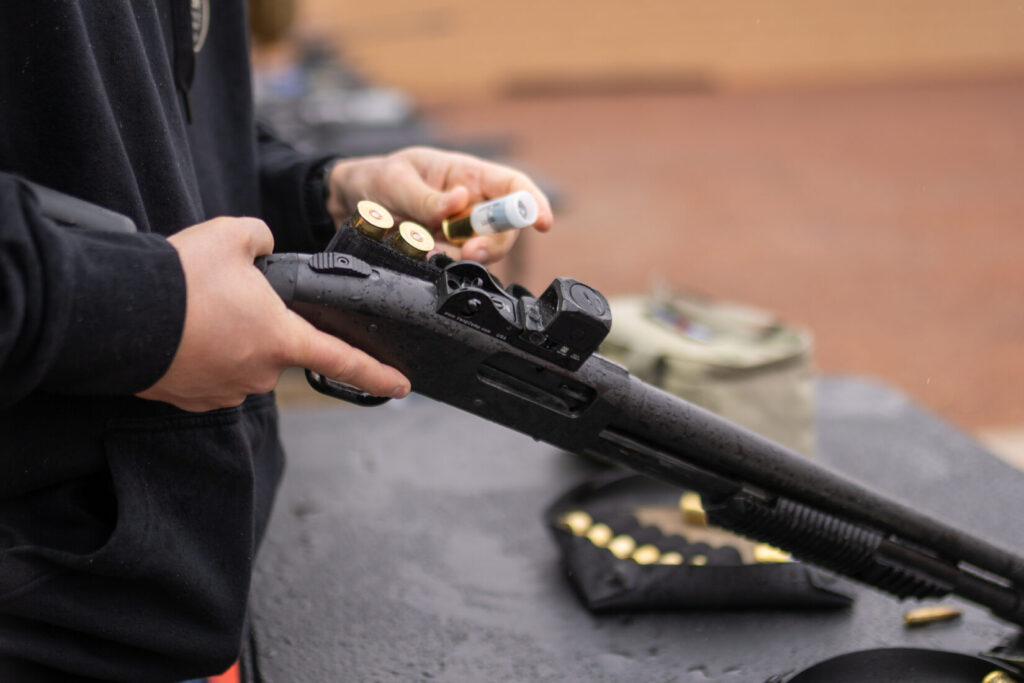
How the round is loaded into the ejection port will be determined by your training and the configuration of the shotgun. Optics on top of the receiver may make loading from under the receiver more preferable. Loading over the receiver has its advantages and may be preferable, but the user will not know unless they train. Even the way the slugs are carried on your kit will determine over or under loading.
Keep in mind, slugs should be zeroed. Just because you can load one quickly into your shotgun doesn’t mean you will hit your target. 25-yard and 50-yard zeros are popular, and whitetail hunters in firearm-restricted states will attest to the viability of the shotgun slug upwards of 100 yards.
As you zero your shotgun, pay attention to the holdovers and drop as the 1 ounce chunk of lead has a steep arc.
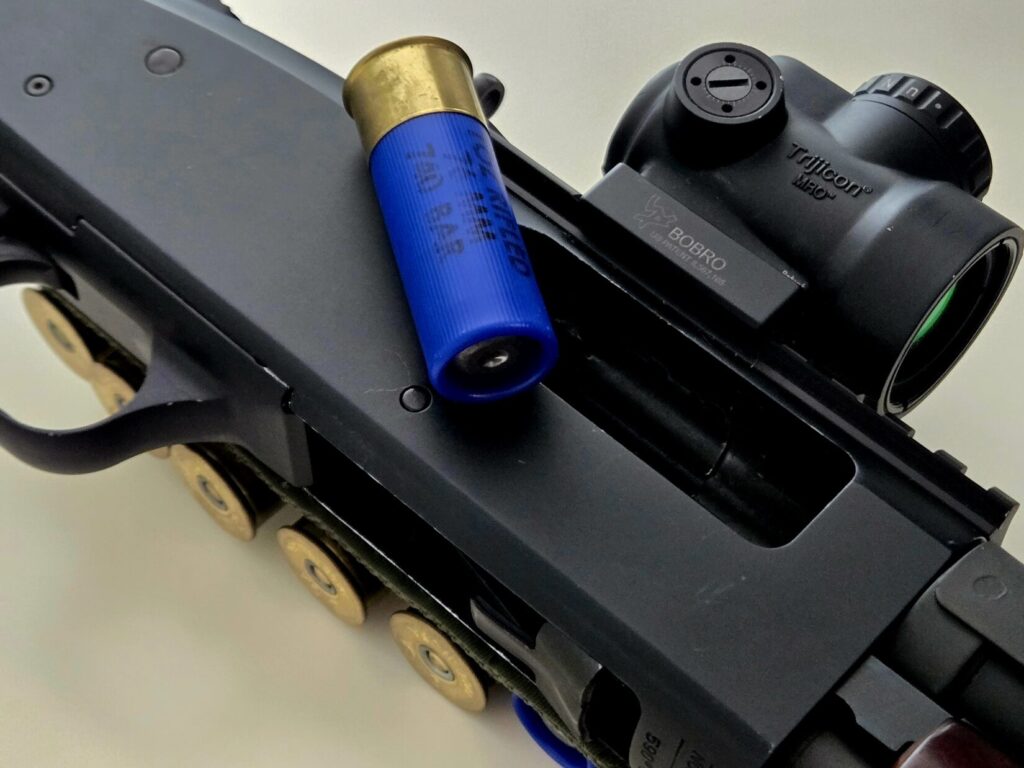
3. Chamber Loading
A single round of 00 buckshot has eight or nine pellets. The difference between an unloaded shotgun pointed downrange and one loaded with a round of buckshot is the ability to create eight or nine wound channels.
When a shotgun runs dry, it is imperative to load it as quickly as possible. Rather than loading the magazine tube and running the action, the user should prioritize loading the chamber and training it downrange.
This type of chamber load is often referred to as the “combat reload” or “emergency reload.” It is said the user knows it’s an emergency if they reload when they have to, not when they want to.
For the greatest efficiency, chamber loading should incorporate the fewest and shortest movements possible. This is why loading from the side saddle makes sense, as well as how orienting the brass on the shotgun shell up or down comes into play.
4. Continuous Load
“Feed the Pig” is an expression heard in shotgun classes around the country. The 12 gauge is a hungry beast, and it runs out of ammunition quickly.
Learning to load what you shoot, or the continuous loading concept, is what the user should adopt.
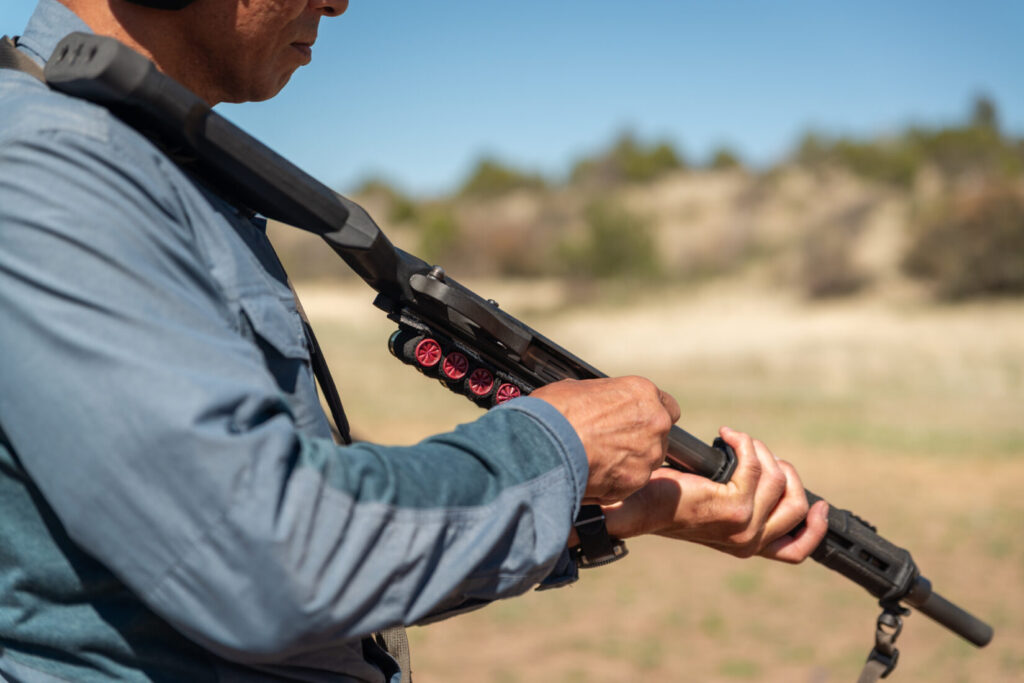
A great way to develop this habit is to perform the one-for-one drill. If the user fires a round, they immediately load a shell. If the user fires a controlled pair, they immediately load two shells. This drill can be done for one or the entire magazine tube. Training this way will surely bloody your thumb as it catches on the elevator, but it saves you the experience of pressing the trigger and hearing the loudest click.
As you work your shotgun, you should know its status at all times. Load until you cannot load, and then store the unused shell.
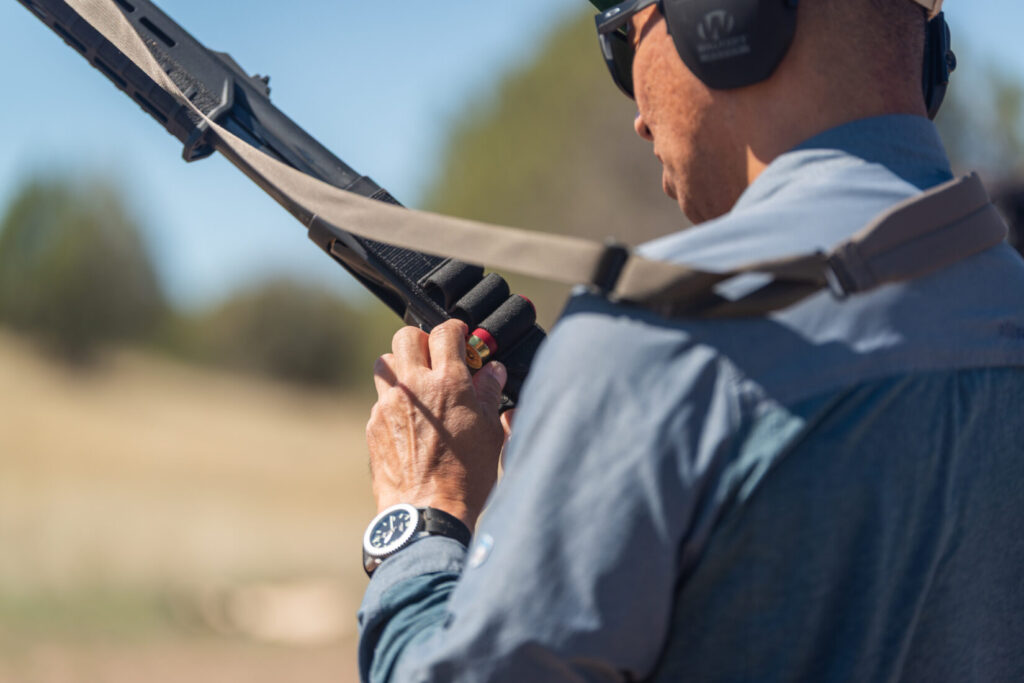
While the shotgun runs out of ammunition quickly, consider the capability of what a single trigger press delivers.
According to Cody Stewart of Vang Comp Systems, “a single trigger press of a shotgun replaces five to seven rounds from a pistol or carbine. This is based on the average number of rounds fired in fatal shootings with those types of firearms according to FBI Statistics.”
The tradeoff of ammunition to the firearm’s effect on target is one worth considering. Keep in mind, with each trigger press comes a conscientious decision to use lethal force.

5. Fit your Shotgun and Work Out the Kinks
A modern shotgun purchased off the shelf from a store may fit the user with minimal tweaking. Many others have been handed down that require modification to truly fit correctly.
Fitting a shotgun involves making sure the length of pull works with the physical size and techniques of the user. Even those over six feet tall who mount the shotgun under their dominant eye will have no problem using a youth or shortened length of pull stock that measures only 13 inches.

If a shotgun is equipped with an optic, the height of the comb should be modified to get the most optimal and natural sight picture. The Magpul SGA stock has an interchangeable comb, but for those without this feature, pieces of SAM Splint can be cut and taped in place.
The goal in fitting the shotgun is to make using it feel natural. The user shouldn’t strain their neck or feel forced to hold it a certain way. When a shotgun fits correctly, it works with you instead of against you.


